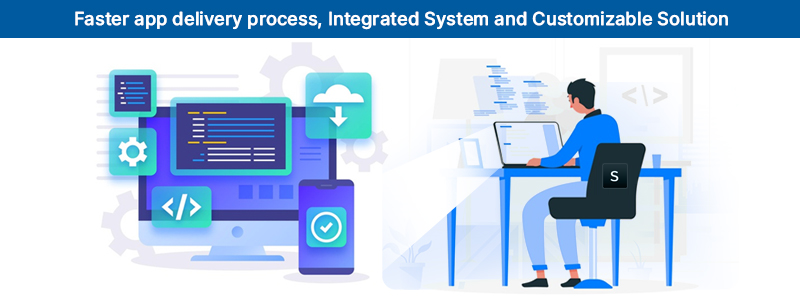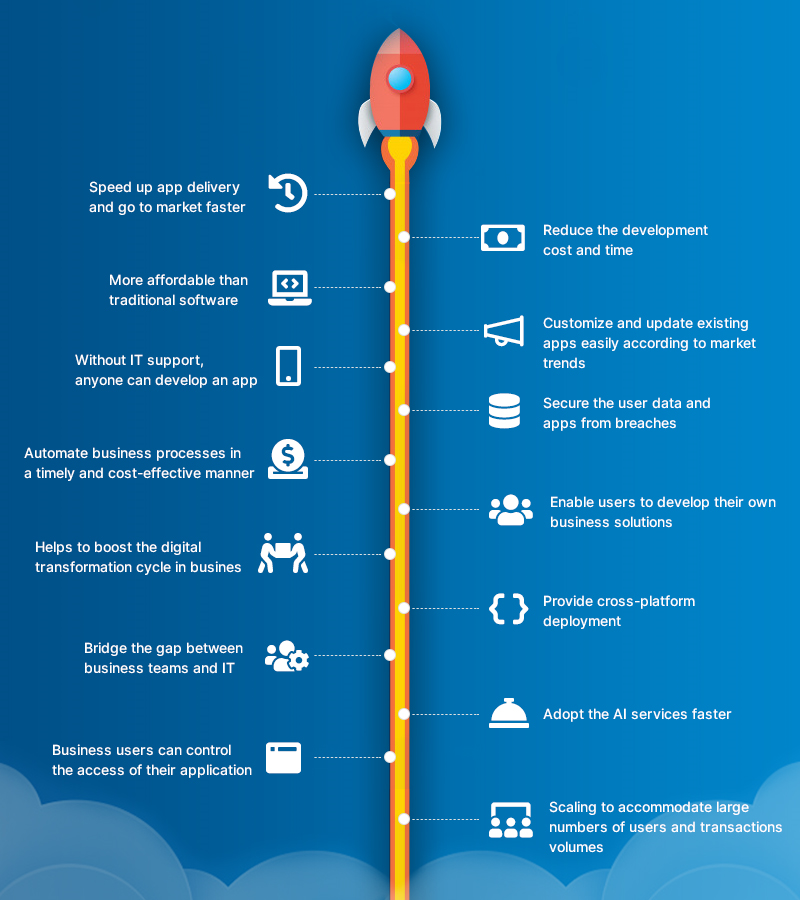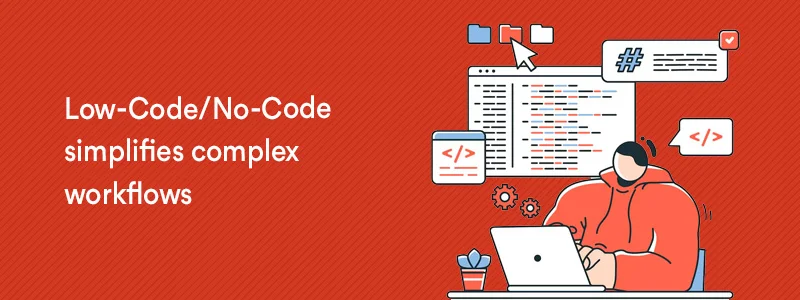
Triple Your Results With Low Code Mobile App Development In Less Time
Is the low code platforms the most trending thing now?
The tec(h)tonic shift in recent days has highlighted the increasing need for improved agility and app personalization. More companies adopt software-driven business models, migrate to the cloud, and interact with consumers through a wide range of digital channels. As a result, we have noticed a significant change in how resources and technology are developed across all businesses in the digital world.
The COVID-19 pandemic has created a host of challenges that will necessitate swift responses from companies. Low-code can help them get there.
Low-code development is a fascinating technology to delve into. The term “low-code” describes the ability to visually build new business applications with minimal hand-coding — when your developers can do something worthwhile faster. Low code is a visual approach to app creation using boilerplate code, pre-built templates, and other building blocks. Even a person without technical knowledge can develop apps using a low code development platform.

Low-code technology allows technical & non-technical developers to build software and solutions using a platform with simple drag-and-drop features instead of extensive coding languages. Users with no formal knowledge of coding or software development may use these intuitive tools to build apps for various uses, such as smartphones and business apps.
Why is low code the secret ingredient in business?
Technology, and its place in the business world, is an ever-evolving juggernaut. The complexity of core structures and market problems is increasing. The pace of change accelerates exponentially, so what is quick now will be glacial in the future.
To stay ahead of the game, you’ll need to develop and implement creative, timely solutions. We believe that implementing low-code solutions allows us to do so. Low code allows developers and business teams to develop apps that are tailored to a particular company need-in days or weeks rather than months. It also eliminates the need for a well-versed technical developers’ team, which is highly beneficial due to the lack of good development talents.
As a quick and easy alternative to traditional software development, low code platforms have become increasingly popular. In the digital world, where customer demands and industry trends are unpredictable, people are continuing to increase their digital participation in the boom of e-commerce, remote work, video collaboration, and more. Therefore, there is a need for applications and capabilities to scale up in an instant. And the low code enables this.
Professional and “netizen developers” (non-professional developers) can use a low-code framework to build apps of varying complexity to fulfill business development needs, simplify processes, and accelerate digital transformation. Rather than waiting for IT, anyone with an idea can build applications using low code.
Low-code eliminates the fundamental gap between what the company needs and the software that has been delivered. However, businesses must use it appropriately, just like any other technology, to get the most value out of it.
The demand for software is outpacing organizations’ ability to supply it. As a result, companies use low code all over the world to speed up their digital transformation. Large companies are constantly pursuing low-code development frameworks to streamline existing processes and reduce the time required to produce software and deliver value without acquiring extra costs or straining development teams.
Significant reasons for putting low code platforms into action:

How can startups use low-code?
MVP: Startups can use an MVP strategy based on business model components to bring a new product to market with the minimum level of features.
Improving customer experience: Using low-code, startups can quickly create applications that allow omnichannel engagement in a single view, resulting in a better customer experience (CX)
Demonstrate traction: Non-technical developers can develop basic concept apps to demonstrate early traction. This can be used as an alpha to entice early adopters.
Pivoting quickly: The ability to make drastic changes is essential as you demonstrate your business model. During the ideation process, startups and new products go through a lot of ups and downs.
Optimizing business processes: Startups can use low-code to build processes and pivot to better business models when necessary, but they should also keep an eye on their current processes.
Low-code mobile app development platforms have become common among businesses as a way to boost productivity and IT reliability. However, almost every business needs a solution to meet today’s digitization requirements. sterlo is a good place to begin your quest. It has a powerful form builder and an easy-to-use visual editor that allows you to make your own apps without knowing how to code.
Break challenges in low code
- Issue 1: The low-code tool fulfilled the project specifications when initially scoped the project (app). However, as more optimization requests came in, meeting them with the preferred low-code tool became difficult.
- sterlo approach to this issue: We have an extensible frontend framework implemented in React js, so anyone can create interactive UIs and develop new features without rewriting existing code. We can easily update the app.
- Issue 2: Debugging apps developed on low-code platforms is difficult.
- sterlo approach to this issue: It allows freedom of action and owns the app after downloading the source. You can also raise tickets detailing the challenges you’re facing with sterlo.
- Issue 3: Low-code adds bloat to the codebase, slowing it down or making it impossible to operate with massive datasets.
- sterlo approach to this issue: At sterlo, we regularly monitor our apps’ efficiency on real devices with huge data volumes to ensure that they meet our high standards.
- Issue 4: Low-code platforms often advertise the fact that you won’t have to write any code, but many non-trivial use cases require some code to be written.
- sterlo approach to this issue: In sterlo, everything is automated at the backend. So the user can design the page using the drag & drop feature or available templates, connect the data using the API connectors and download the app source.
- Issue 5: In many low code platforms, publish a designed app can be problematic.
- sterlo approach to this issue: Using sterlo, you can easily upload and publish the designed app in Play Store or App Store for global access.
sterlo is a low code app development platform that empowers the average citizens to create apps to solve problems and monetize their ideas.
Implementing this approach seems to be a smart concept to stick to, as the demand for low-code production continues to expand widely through various industries. Low-code apps allow businesses to adapt to changing circumstances and effectively meet consumer needs rapidly. sterlo react native mobile app development platform helps businesses build apps that help them simplify their business processes. Our experts will help you develop new software or turn existing software into more powerful and scalable solutions.


